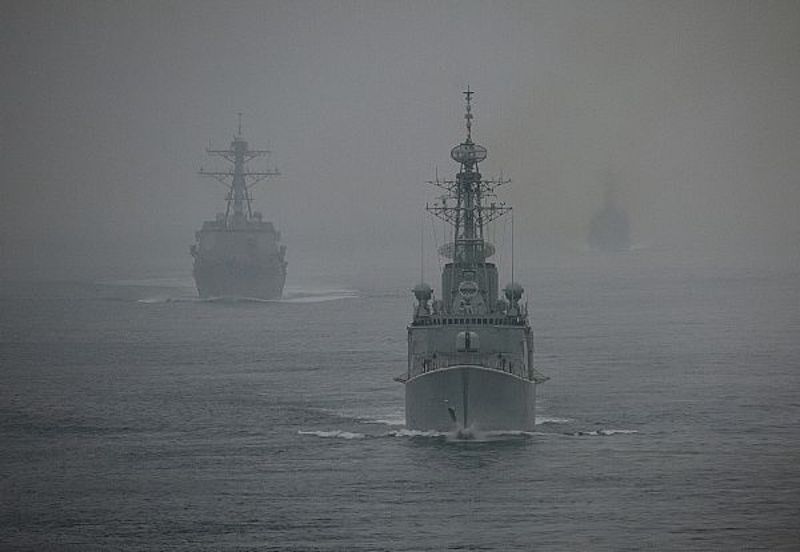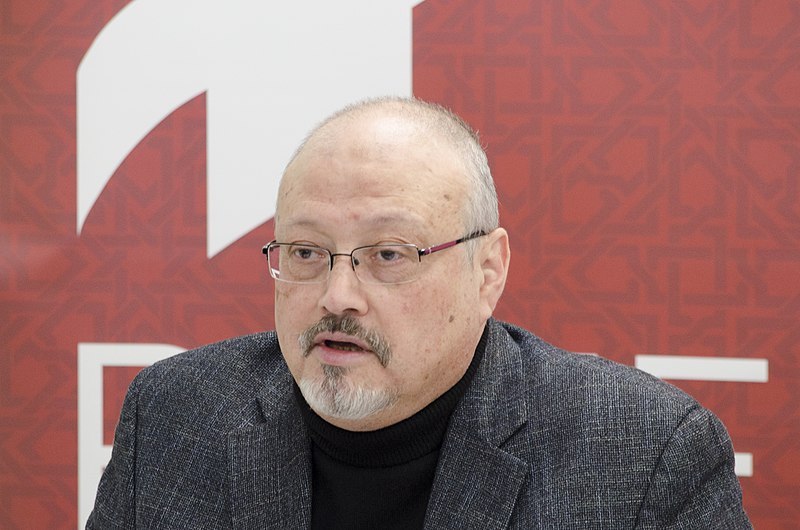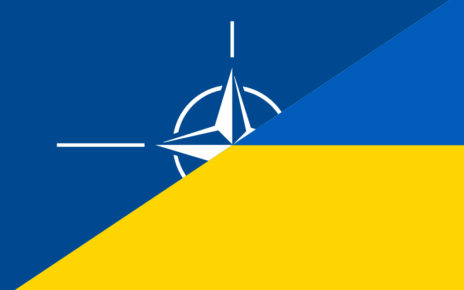Ian Pelekis, a Director of the Canadian Centre for Strategic Studies, is an acting collaborator with NAOC on this special report on the Defence Policy.
On June 7th, 2017, a new defence policy was released by the Government of Canada, after an ostensibly watershed speech by Foreign Minister Chrystia Freeland. Freeland echoed doubts also expressed by other NATO members over America’s abandonment of its traditional mantle of leading the liberal international order. However, the same speech saw Freeland pay homage to classical realist concepts like the ‘balance of power,’ phrases rarely uttered by liberal states. Ironically, the speech’s political posturing, and the circumstances of its being given, stand in contradiction with the explicitly stated intention to make almost any Canadian action abroad dependent on consensus amongst its allies. The defence policy, unveiled the day after Freeland’s speech and seemingly in accord with it, acknowledges the growing role the Canadian Armed Forces (CAF) will have to play, especially in globally promoting Canadian values and defending Canadian interests in a world where the balance of power is ‘evolving’. Accompanying these claims are ambitious procurement and modernization strategies designed to combat these identified threats. Canadians hoping for a more assertive, autonomous, and accommodating foreign policy were left to decipher how a strong, secure, engaged Canada can act, adapt, and anticipate in a world where the only “weight” we have is the weight we ourselves “pull”. Yet, sifting through the vague generalities of the policy, after a quantitative analysis, reveals a lack of specifics, obfuscating definitions, and violations of basic budgetary tenets. Such was a budget designed “by Canadians for Canadians”. Consequently, a thorough examination of budgetary issues reinforces assumptions that this policy represents not a strategic document outlining how Canada can correlate its national interests and capabilities; but, a political document from which some short-medium term advantage can be accrued, especially amongst allies.
The first obstacle preventing Canadians from fully understanding their own Defence Policy is the absence of specifics, especially in relation to key definitions and terms. Take the term ‘advanced fighters’, 88 of which the Royal Canadian Air Force (RCAF) will soon acquire. Canada intends to procure and enter into service 88 advanced fighters, without actually specifying the meaning of an “advanced fighter”. Given the long and protracted history of negotiations between Lockheed Martin and the Government of Canada, the F-35 becomes an immediate contender to fill this role. Other possibilities for this purchase are limited. Most 5th generation models are being produced by foreign competitors, like the Russian PAK FA or the Chinese J-31, resulting in a probable purchase of the F-35. These assumptions are valid only if the policy defines an “advanced fighter” as a 5th fighter. The budgeting for this seems unrealistic. $26.4 billion CAD has been allocated to this acquisition, yet the purchase of 18 Super Hornets, if approved, alone would cost Canada $5-7 billion CAD. Regardless, if these are used as reference points, then $26.4 billion CAD is insufficient to meet Canada’s stated commitments. Furthermore, the policy does not outline specific action addressing the acknowledged capability gap. It exacerbates the confusion by refusing to identify what specific aircraft will be procured and even leaves open to interpretation whether the 18 interim Super Hornets will be counted towards the total 88 fighters, which would leave the RCAF with only 70 new 5th generation fighters. Considering modern development programs, 4th generation fighters are becoming increasingly obsolescent, with most NATO countries upgrading to fleets with 5th aircraft and it is important for Canada to maintain interoperability with key allies. Unfortunately, by examining Canada’s options, it becomes apparent $26.4 billion CAD is an unrealistic cost estimation, or it is based on the procurement of less capable fighters that will not improve the capabilities of the RCAF.
This problem continues when looking at the Navy’s strategy. The Royal Canadian Navy (RCN) will be allocated $14.6 billion CAD for 15 new Surface Combatants. Four Iroquois class destroyers have been retired, leaving another capability gap in the Canada’s ability to contribute to the alliance’s naval operations as well. Currently, the fleet is reliant on 12 retrofitted frigates whose lives have been extended until 2030, which cannot meet CAF requirements . The policy states that the first new surface combatants will not enter service until 2026, with the remaining 14 ships due afterwards. Such scheduling, combined with the 30 year service life of these combatants means the majority of “accrual costs” will be pushed “outside the 20 years reflected.” $22.5 billion CAD, even with this spread, seems unrealistic. In fact, it has already been uncovered that internal documents project costs at $26 billion CAD, with a possibility of running up to $40 billion CAD. These costing problems are compounded by the vague definitions accompanying them.
The definition of ‘Surface Combatant’ can be manipulated to only produce a handful of destroyers, more frigates, and even some small corvettes. While Corvettes play an important role in a modern Navy, especially as technology amplifies and expands their capabilities, they would not be able to provide the same power projection capabilities as destroyers or frigates. Their main utility lies in Coastal defence and would not contribute to the task force missions described in the policy. Instead, the possibility of procuring corvettes would provide space for the retrofitted frigates to accompany a handful of new destroyers on international missions, but this would compromise RCN capabilities. This composition comes along with its own inherent risks, for instance, not having enough tonnage to achieve RCN objectives, or running into even deeper research and development issues as the RCN attempts to develop different classes of ship. Alongside these straightforward costing issues, there has been a history of difficulty with the Canadian Government’s National Shipbuilding Strategy, most recently marked by the scandal concerning Vice Admiral Mark Norman, the vice chief of the defence staff, impacting the procurement program. Similarly to the fighter jet program, the situation is unrealistic. This will hinder Canada’s military capabilities, and ability to uphold its alliance commitments.
Fighter jets and surface combatants are only two of 52 “new capital projects” in addition to “previously planned equipment” investments. For all these investments, planned, or new, there exists $108 billion CAD, with $74.2 billion for existing, and $38.2 for new, capital equipment. The sum of these items is exactly $108.6 billion, leaving no room for errors, miscalculations, or unforeseen problems. While this is unlikely in most procurement scenarios, it is doubtful whether this is to be accomplished when the report contains little information on specific procurement programs and insight into what options are available is sparse. How does one predict the costs of future capital investments when one does not know what they are investing in? It will be curious to see where other discrepancies emerge over the coming weeks as a more ‘rigorous analysis’ proceeds. This stands in contradiction to the emphasis placed on transparency and public facing consultations, considering the public has to rely on a future investment plan to see what the procurement plan actually consists of.
The ‘Defence Investment Plan’ scheduled for release in 2018, is designed to clarify some of these questions. Two further questions arise from this. First, what is the purpose of this policy if it is mostly dependent on the release of the ‘Defence Investment Plan’? Second, how does one allocate the money to these projects if they haven’t finalized the investment plan yet? Doesn’t this make this policy tentative at best, especially if they are planning to review the plan every 3 years? Ugly scenarios immediately come to mind, with the familiar theme of a government running over budget on this project, or procuring lesser quality items for the CAF than stipulated. This could result in domestic damage by hurting the budget, endangering defence abilities and security commitments which have been committed to, or both. This middle ground is the likely outcome of a political compromise between those advocating for the purchase of advanced capabilities at the expense of running costs and those who want to keep in line with the budget at the expense of technical capability. This suggests a political utility to this document. It is vague and carries with it political elements, such as diversity and identity related initiatives. While these mentions are valued and needed, they contribute little to the dire situation predicted at the international level. It becomes questionable why these are at the forefront of the document, and the investment planning and global trends come after. What is more disturbing, especially in terms of accountability, is that the government is able to transfer risk to a future government by using an accrual method of accounting. It becomes quite likely that this government didn’t forecast a budget for the next 20 years, but that they would not be in power 20 years from now. Accounting for the policy’s political implications further demonstrate either a lack of foresight, or the current government’s cynical calculation that it does not need any in the likely event it is no longer in power 20 years from now.
The theory behind the policy might be to provide the CAF a material basis for advancing Canada’s national interest; but, the manner in which the policy describes Canada’s present and future force structure makes Canada’s national interest seemingly inextricable from the consensus of allies. The policy dictates that action will manifest through participation in peace and humanitarian relief operations. The prominence assigned to frequently iterated phrases, especially ‘integration’ and interoperability’, in the context of force modernization, further reinforces the notion that Canada is intent on making any action contingent on what other “likeminded people and countries who share aims” decide. The severe limitations placed on Canada’s scope of unilateral action is one of the major shortcomings of this policy.
The policy states that Canada’s international security obligations are shifting “from expeditionary operations” to “capacity building with partners”. More importantly it acknowledges that “Canada rarely acts alone”. Given the fashion in which the policy structures Canada’s forces (i.e. with training at the brigade level to prepare CAF for integration with other forces in peace operations), this policy will hinder Canada’s capacity to act alone. Canada’s capacity for effective unilateral action is important, regardless of how unlikely that scenario is perceived to be. By possessing the capability and announcing the determination to act unilaterally, Canada conveys to the world that not only does it have interests, but it more importantly can and will act to protect them. Of course, limited areas exist where current Canadian capabilities can reliably sustain a Canadian commitment extending over several years.
Admirably elevating Canada’s national interest to the broad objective of “preserv[ing] and strengthening” the liberal international order comes at the expense of Canada’s ability to act autonomously. Minister Freeland correctly outlined how Canada’s long-term interests in sustaining the international order are an expression of its values, as well as the importance of Canada’s continued engagement internationally. What is left unaddressed are potential areas of tensions between Canada’s anticipation of challenges to the international order and its ability to act in light of these challenges, unilaterally if necessary.
Both Freeland’s speech and the Defence Policy leave tensions between anticipating, acting and engaging, as stated in the ‘New Approach’, unaddressed. Little good is derived from anticipating a perceived problem if Canada only plans to act in concert with its allies should they address it. If Canada can only act on issues where at least some allies are willing to contribute material resources to, then, from Canada’s perspective, action is reduced to acceding to consensus. What this defence policy does is insist that at least Canada will make a greater effort to implement the outcome of a consensus through focusing on augmenting capabilities within the context of ‘interoperability’ and ‘integration’ of its forces with those of allies.
The notion of engagement in the world through “peacekeeping operation and peace support operations” is actually an abdication of Canadian national interest. By reducing Canada’s participation in the international system to the consensus of its many allies, inaction will be the most common outcome. When allies do not agree on a course of action the consensus will degenerate into inaction. In collective security arrangements, allies are often unable to agree on a common action because not every country interprets threats in a similar manner. Since “Canada rarely acts alone”, one worries about situations arising, particularly in the Arctic, where Canada is forced to resort to unilateral action but is incapable of doing so. Canada rarely acting alone appears to be a pretext for devoting inordinate attention to multilateral operations and interoperability. This fails to acknowledge Canada’s unique geo-strategic location. With the United States questioning its “mantle” of global leadership, and other NATO members located across the Atlantic, Canada must acknowledge possible demands to act unilaterally.
This concern is accompanied by the paradox in Freeland’s questioning of “traditional partners” and alliances enduring 70 years, while having the policy focus on acting within the framework of traditional alliances and partnerships. Freeland argues against free-riding under America’s security umbrella because such a dependency is not in Canada’s interest. By formulating a Defence Policy that effectively rules out unilateral action, should necessity demand it, Canada is being subjected to another form of dependency: that of consensus. By only grudgingly contemplating a role for the CAF outside of humanitarianism assistance and peace operations, Canadian participation in international affairs appears to be inextricable from allied consensus.
The combination of financial and political factors suggest the Defence Policy was not a serious effort to align Canada’s capabilities and objectives with the current security environment; but, was created as a tool for immediate political impact. Of greater concern is the Policy’s budgetary and accounting practices which pose greater risk than reward for the CAF. Questions concerning vital capabilities for both the Navy and Air Force are left unanswered. Greater transparency and flexibility, which are dubious at best, are provided at the by an accrual system of accounting- to be studied in part two of this series- which transfers the political risk and financial cost of initiating any project in the development and acquisition phase to a future government. In essence, multiple deficiencies diminish the policy’s credibility as an outline of how Canada will Anticipate, Act, and Adapt in a complex multipolar environment.
Photo: The Royal Canadian Navy destroyer HMCS Algonquin (DDGH 283) leads the Arleigh Burke-class guided-missile destroyer USS Stockdale (DDG 106) and the Oliver Hazard Perry-class guided-missile frigate USS McClusky (FFG 41) (2011) via U.S. Navy
Disclaimer: Any views or opinions expressed in articles are solely those of the authors and do not necessarily represent the views of the NATO Association of Canada. Furthermore, the views or opinions of Ian Pelekis, who is acting only in the capacity of a Contributor to NAOC, which are expressed in this article are solely his.




